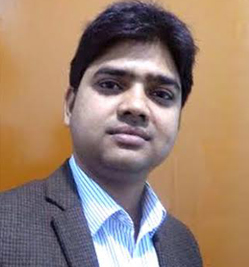
Ashok Das aka Ashok Kumar is a senior journalist with more than 13 years’ experience. Though his ancestral native place was in Chhapra District of Bihar, India, he has born to Mr Asharfi Das and Ms Sunaina Devi in the nearby district of Gopalganj District where his father was an employee in the District Court.
Das completed his graduation from college inhome town Gopalganj affiliated to Jaiprakash University Chhapra. After graduation, he did post graduate diploma in journalism from the prestigious Indian Institute of Mass Communication, Delhi, in the year 2006.
He has worked with well-known newspapers like Lokmat, Amar Ujala, Deshonnati (Marathi) and media portal Bhadas4media. As a political reporter,he has covered Parliament, Central Government Ministries and national political party of India like the Congress and the BJP.
In 2010, he got involved in the Bahujan Movement and launched the monthly magazine Dalit Dastak along with a group of people also associated with the Bahujan Movement. The magazine has since evolved into a popular YouTube channel www.youtube.com/@dalitdastak and web portal, www.dalitdastak.com, having a wide reach among different sections of the people in the Hindi-speaking belt of India. The magazine continues to be published every month and has a print as well as an electronic edition. Ashok Das also heads the Das Publication, which publishes books related to the Bhujan Movement. A sister website www.bahujanbooks.com launched by Dalit Dastak, provides a much-needed online platform for the propagation and sale of Dalit-Bahujan books.
Achievement
- Participated as a Speaker in ‘Harvard India Conference’ 2020 organized by Harvard University. The topic of his discourse was ‘Caste and Media’.
Important Landmark
- Organised ‘100 Years of Mooknayak’: 100 years of Ambedkari Journalism’event on 31st January 2020 at New Delhi’s Ambedkar International Centre located at Janpath in the heart of the Indian capital. Around 800 people participated in this event, including journalists, academicians and activists. The event was widely covered by prominent media outlets like the Hindustan Times, Navbharat Times, News18, Hari bhumi, Dainik Bhaskar and Lokmat.
Media Coverage
- Dalit Dastak has been a much-talked about publication. Ashok Das and his magazine got featured as emerging Dalit-Bahujan publisher and publication in The Hindustan Times, DW (Germany), The Asahi Shimbun (Japan), The Mainichi Newspapers (Japan), The Week, Indian Express, Lokmat (Marathi), News 18, Haribhumi, DainikBhaskar, Forward Press, The Print, Business Standard and others media entities.
Awards
- PRABHAS JOSHI PATRAKARITA SAMMAN.
- MEDIA SAROKAR SAMMAN by bhadar4media
- SAMYAK SAHITYA SAMMAN.
BOOKS
- KARISHMAI KANSHIRAM
- 50 BAHUJAN NAYAK
- EK MULAKAT DIGGAJON KE SATH
- RASHTRANIRMATA BABASAHEB AMBEDKAR (Edited)


